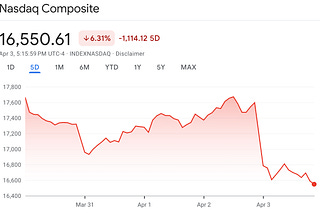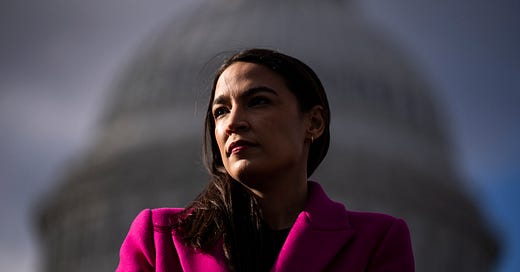
One Key to Social and Economic Opportunity: Friendship
A huge new study drawn from Facebook data reveals the connections between social capital and economic mobility.
A year ago, in a Bulwark article, I proposed a social and economic opportunity agenda for young people, job seekers, and people starting careers—an agenda that emphasizes knowledge and relationships: what individuals know, but also who they know. This understanding of opportunity focuses on social capital, the relationships and special friendships we develop with others that broaden our knowledge, deepen our skills, and expand our social networks.
Two new analyses of the relationship between social capital and economic mobility by Harvard economist Raj Chetty and nearly two dozen colleagues at the National Bureau of Economic Research provide new and compelling evidence for this view.
The study analyzed the zip code information of 72.2 million U.S. Facebook users—84 percent of all American adults between the ages of 25 and 44—whose accounts produced 21 billion Facebook “friendships.” Individuals were active on Facebook at least once in the prior 30 days and had at least 100 U.S.-based friends on the site.
This information was used to examine the relationship between these friendship networks and upward income mobility, which the authors define as “children’s chances of rising up the income distribution conditional on growing up in low-income families.” The analysts estimated individual incomes based on factors that include zip code, education attainment, and age. The volume of data they collected allowed them to do a detailed analysis of other factors that influenced economic mobility, including the colleges and high schools that their millions of subjects attended.
The study used three well-established forms of social capital for their principal analysis: (1) economic connectedness, or the degree to which low-income and high-income people are friends with each other; (2) social cohesion, or the degree to which social networks develop into cliques, where individual friendships are supported by mutual friends; and (3) civic engagement, or how often individuals volunteer to participate in community activities and organizations.
Here are three key findings from their research.
Friendships matter most. The strongest predictor of upward income mobility is economic connectedness, or friendships between people with high and low socioeconomic status. The other two forms of social capital are not strongly associated with mobility. This class-bridging form of social capital has a stronger effect on economic mobility than other relevant factors like school quality, job availability, family structure, or a community’s racial makeup. Friendship networks matter a lot for young people pursuing higher-paying jobs and better careers: If poor children grew up in a neighborhood where 70 percent of their friends were wealthy, that correlated, on average, with their future income being higher by 20 percent—an increase comparable to attending two or so years of college.
Place is key to developing these friendships. Economic connectedness varies widely across neighborhoods. Even when neighborhoods are home to individuals with similar incomes, some enable much more income mobility than others. For example, outcomes are better, even in poorer zip codes, where lower-income people have a greater number of rich friends. In fact, living in a place where more people are connected with one another across class divides correlates with better economic outcomes irrespective of the average income of the community. The authors write, “Areas with higher [economic connectedness] have large positive causal effects in children’s prospects for upward mobility.”
Cross-class friendships are difficult. It’s normal for people to become friends with those who are similar to them—especially those from the same income group. For example, while the richest make more friends in college, low-income individuals tend to become friends more often with their neighbors, while middle-class individuals meet more of their friends through work. From an economic connectedness perspective, friendship networks that bridge these divides result from a blend of exposure to people—especially of lower-income people encountering higher-income people—and friending bias, the rate at which lower-income people then engage with and befriend these higher-income individuals.
While the two published papers report chiefly on the empirical findings, in podcast discussions of the research, Chetty and his interlocutors speculate on obstacles to economic connectedness. Barriers that prevent people from meeting people from other socioeconomic classes include housing prices and zoning ordinances that perpetuate communities with little to no diversity in terms of race or class, which inevitably has the effect of limiting interpersonal contact across those differences. These types of barriers are not easily overcome, though Chetty says that there are “[places] you can move within your own community . . . where we’re seeing much better outcomes for kids,” if parents are willing to make the “opportunity bargains” to relocate there.
Friending bias presents its own set of obstacles: There’s a reason Chetty and his fellow researchers characterize friendships across class divides as those formed for the purpose of “getting ahead,” because while they are rewarding, they aren’t easy to enter into or maintain. But conditions can be created to foster them in settings where members of different classes interact. For example, large high schools can assign students to smaller and more diverse “houses” or other organizational groups. Schools can restructure their cafeterias, libraries, and science labs to promote social bonds across groups; one panel participant on the Brookings Institute podcast about the findings suggested that larger schools with multiple cafeterias should avoid offering reduced-cost lunches in just some of them, since doing could reinforce class segregation. But Chetty makes the point that there are also contexts where exposure barriers are naturally lowered. Places of worship are the most effective setting for fostering cross-class exposure out of the ones he and his colleagues studied, followed by recreational groups and the workplace.
The analysis offered by Chetty and his colleagues comports with a large body of social science theory and other research into what experts describe as two types of social capital. Bonding social capital is developed in like-minded groups; these relationships between people who are demographically similar are typically strong and reinforce social cohesion. Bridging social capital, by contrast, develops in relationships between members of groups with important differences in terms of race, profession, socioeconomic class, or income level. Researchers have often characterized bonding social capital as what we accrue for “getting by”—they are the relationships with people similar to us whom we identify with and even rely on—while bridging social capital is for gaining power, finding and seizing new opportunities, and in short, as Chetty’s team described it, for “getting ahead.”
These forms of social capital align with what organizational psychologist Adam Grant calls strong and weak ties. He writes: “Our strong ties tend to travel in the same social circles and know . . . the same opportunities,” whereas “weak ties are more likely to open up access to a different network, facilitating the discovery of original leads.” Chetty and his colleagues’ research on economic connectedness provides empirical support for an old but intuitive idea: that friendships with those who are unlike us can open up parts of the world that we have not seen before—including new prospects and opportunities. (Early in his conversation with Chetty, EconTalk podcast host Russ Roberts says “a lot of movies [have been] made” about economic connectedness: “The poor person who falls in socially with the rich person and who connects them, and then they get all kinds of opportunities they wouldn't have had.”)
Analysts at the American Enterprise Institute Survey Center on American Life found that people who often use neighborhood amenities like “libraries, public parks, and coffee shops” are much more likely to develop weak ties—that is to say, relationships with people who are unlike them. Living in communities that provide accessible local spaces for members of various groups to interact can help residents overcome a natural tendency to self-select into homogeneous groups. The center’s report explains: “Americans who live in areas packed with neighborhood amenities . . . tend to report having a more racially and religiously diverse set of friends and acquaintances.”
Cross-class friendship—what these researchers call economic connectedness—is an essential factor in expanding economic opportunity, improving individual life prospects, and advancing human flourishing. These friendships place people on a trajectory to social and economic well-being, informed citizenship, and civic responsibility, and they help lay a foundation for adult success and a lifetime of opportunity. That’s good for individuals and for our society.










